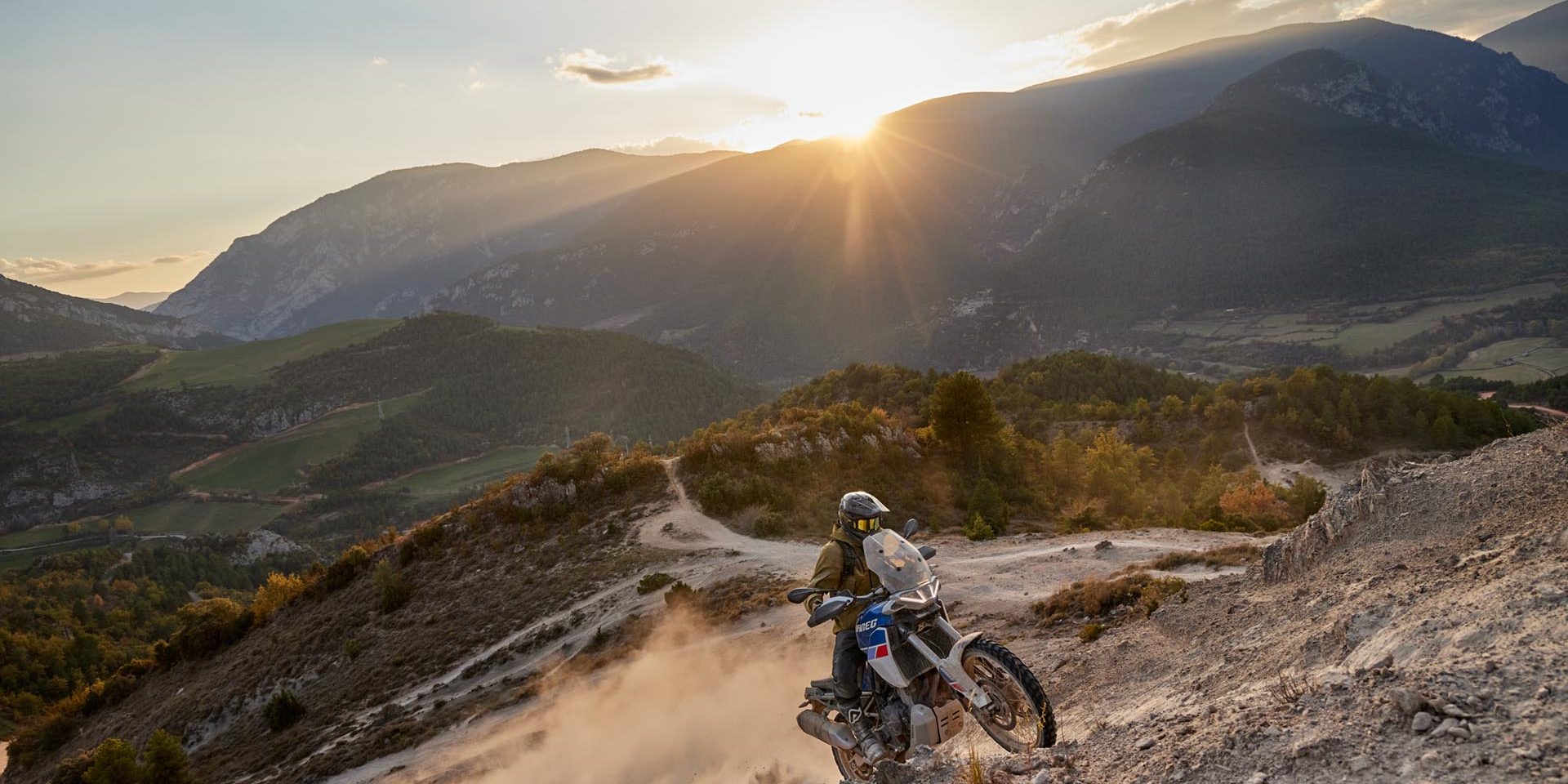Aprilia Australia is excited to announce its highly anticipated Tuareg 660 adventure bike will have an alluring rideaway price from $22,230 when it arrives in local showrooms in June. Technical, essential, dynamic and proudly Italian, the Tuareg 660 will be available in full-power and learner-friendly versions as well as the choice of three striking liveries:
- Indaco Tagelmust (Evocative Premium, $22,530 rideaway): An iconic livery and statement of the Tuareg movement. A chromatic tribute to the Dakari Aprilia lineage carved out of the glorious past and projected into the future.
- Acid Gold ($22,230 rideaway): The calling card of the 660 family – intense, bold and piercing – splashed on a base of raw black. It is recognisable anywhere, even in the thick of the forest or arid desert.
- Martian Red ($22,230 rideaway): A simple, linear black background enriched with classic Aprilia red to create a clearly recognisable livery, a trademark of Aprilia.

Tuareg 660 will be available in full-power and learner-friendly versions .
The 660 platform represents the start of a new era for Aprilia. One defined by lightweight and high-performance motorcycles with an attractive design and unique, unequivocally premium technological content. It is Aprilia’s response to the new generation’s demand for easy and fun vehicles capable of being just as thrilling on the daily commute as they are on dynamic rides. The result is a range of medium-engine bikes that introduce a new conception of sportiness, in line with the expectations of a younger and more knowledgeable market.
Following on the heels of the highly popular RS 660 and Tuono 660, dedicated to street sport riding, this is a true off-road bike. It bears a name that was introduced by Aprilia in 1985, which subsequently became legendary – a name so evocative it’s clear what the bike is all about.
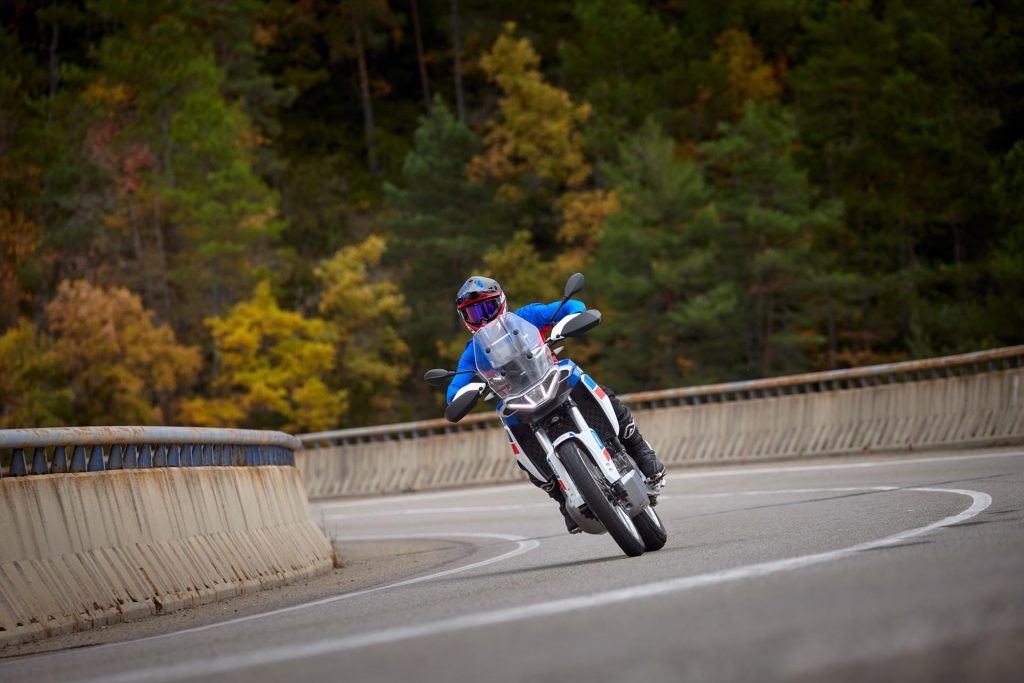
Expected to arrive in local showrooms in May/June. Pricing has yet to be confirmed.
With such a significant history, the Tuareg name expresses a unique set of values: a guarantee of riding quality, performance and fun. Tuareg 660, an off-road bike par excellence, is also exceptional on the road and on even the longest and most adventurous trips.
It was designed to accompany those seeking freedom – a core value in the culture of the Tuareg people, who identify with the name “imohag”, meaning “free men”. Granting the gift of freedom is Tuareg’s real mission.
Developed on the extraordinary mechanical base of the Aprilia 660 twin-cylinder, from the very first sketches it was designed to be mounted in a chassis architecture with a different intended use.
Tuareg 660 was designed, developed and built to be the best combination of single-cylinder enduro bikes and medium-engine capacity adventure bikes. Two opposing worlds – until now.
Tuareg 660 raises the bar for off-road adventure bike riding. But, at the same time, it places its supreme travelling spirit centre stage thanks to its impeccable performance on asphalt, its premium technical content, the performance of its 80hp (58.8kW) twin-cylinder and its reduced weight of just 187kg without fluids.

Expected to arrive in local showrooms in May/June. Pricing has yet to be confirmed.
The style: a perfect example of functional design
Tuareg 660’s design is the result of the work done by the PADC (Piaggio Advanced Design Center), the Piaggio Group’s style outpost in Pasadena, California. This privileged observation point on the world is where the latest trends are developed before they spread globally. The designers, led by Miguel Galluzzi, imagined a disruptive and highly distinctive style. The guiding light of the process was the wholesale elimination of any part that did not have a specific function, so as to keep the size and overall weight in check. Its style was forged in the search for a perfect balance between form and technological/functional features.
It drew inspiration from the outdoor world and technical items used in adventure activities: highly functional items that make the technical element the source of their beauty. In the same way, the Aprilia Tuareg 660’s design conveys the idea of a vehicle ready to meet any need, developed with a constant focus on functionality. The graphics and logo of the ‘Indaco Tagelmust’ version, on the other hand, are a clear tribute to the 1988 Tuareg 600 Wind.
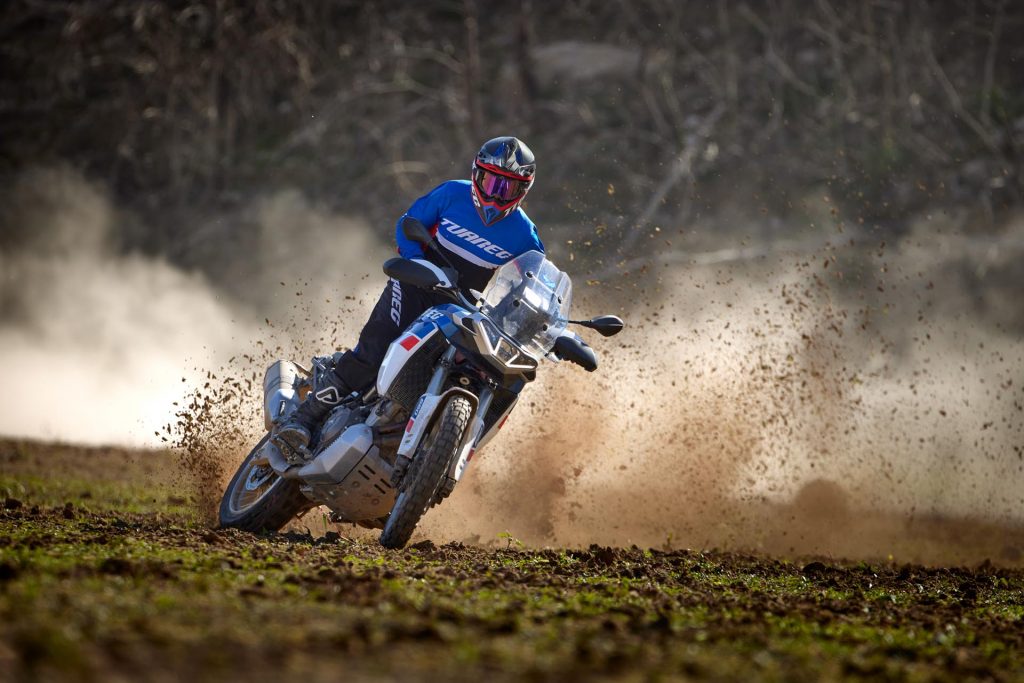
Expected to arrive in local showrooms in May/June. Pricing has yet to be confirmed.
A highly unique and innovative solution was chosen for the top fairing, consisting only of a broad expanse of plexiglass. This is transparent to provide a clear view of the elegantly refined support, which is made with a specific techno polymer enriched with fibreglass that also serves as the instrument cluster’s support structure: evidence of Tuareg 660’s painstaking construction. For the same reason, there are no classic side panels below the seat. They are replaced by two panels that can be removed when mounting the set of side panniers (available separately as an accessory) which therefore remain closer to the vehicle’s body.
The full LED lighting system includes the new, compact headlight unit featuring perimeter DRL. For the first time in this category, Tuareg 660 introduces the concept of double fairing which acts as an aerodynamic appendage, already successfully introduced on the RS 660 and Tuono 660. This is further confirmation of Aprilia’s efforts in studying aerodynamic solutions that are increasingly more complex, benefiting performance and comfort.
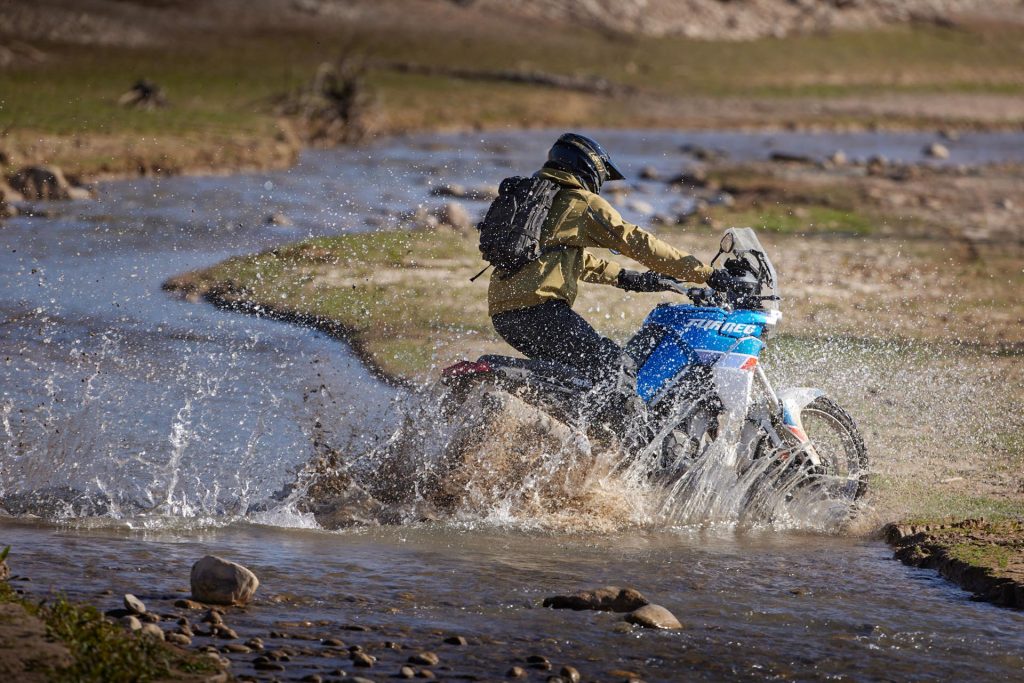
Expected to arrive in local showrooms in May/June. Pricing has yet to be confirmed.
Ergonomics and ride: a true Aprilia
Defining the ergonomics was one of the most complex development challenges, given Tuareg 660’s primary goal of representing the best possible combination of two distinct worlds: the single-cylinder enduro world and the adventure bike world. The parallel configuration of the Aprilia twin-cylinder engine allowed the designers to maintain a contained saddle height off the ground and come up with a much lower straddle arch, making it easy for riders of any height to reach the ground.
To combine high rear-wheel travel – essential in off-road riding – with the ease of mounting the saddle, the subframe area was lowered as much as possible, thereby allowing for the design of a sleek but accessible tail fairing. Just as much attention was applied to the dimensions in order to achieve an extremely compact and slim bike, especially in the area where the rider’s legs come into contact with the fuel tank, which, despite its amazing 18-litre capacity, ensures a range of 450km.
The riding position makes travelling even more pleasurable, with the legs only slightly bent and the back assuming an erect and extended posture; the wide and high conical aluminium handlebar allows for optimum control of the front end, giving the rider the magnificent sensations of handling and feeling typical of all Aprilia chassis architectures. The passenger also gets a smooth ride, with a long and comfortable portion of the seat and two convenient, built-in grab handles. Tuareg 660’s intended use off-road is obvious when riding upright: the extremely compact central area is even reminiscent of the one on single-cylinder enduro bikes, whereas the layout of the saddle and sides means the rider has plenty of room to move around.
In order to have maximum control off road, the rubber footpeg covers can be removed and the tip of the rear brake lever can be easily raised. The high position of the handlebar allows for a slightly bent-forward body position to maintain an erect posture for a constantly active ride. The painstaking care that went into limiting the weight of each and every component has reduced the overall kerb weight to just 204kg, an incredible result in the medium engine capacity adventure bike category. Its light weight, compactness, and perfect balance, combined with record-breaking suspension travel, make Tuareg the new benchmark for true off-roading sportiness and effectiveness.
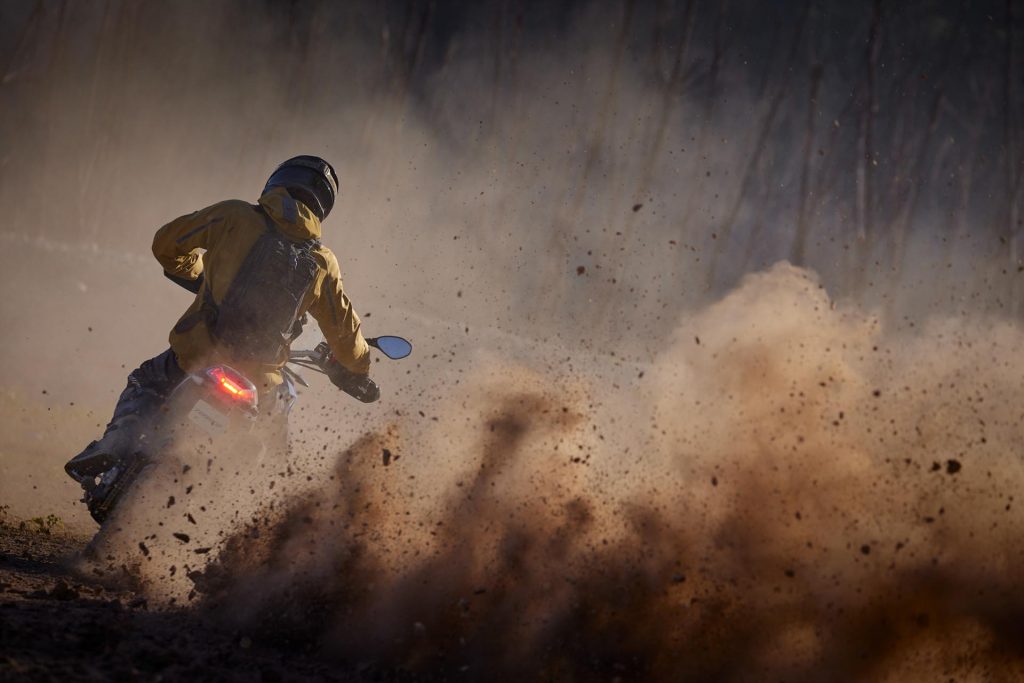
Expected to arrive in local showrooms in May/June. Pricing has yet to be confirmed.
Chassis architecture: Aprilia raises the bar once again
Aprilia chassis architectures have always been recognised as the best in the world for effectiveness in sport riding and in particular for the unique and unmistakeable front wheel feeling that they provide. They are the result of a design and construction culture derived directly from the experience of Aprilia Racing which has already resulted in 54 world titles. The Tuareg 660 chassis architecture, as is already the case with its street bike siblings, aims to raise the bar in the category, both on and off road. Everything is obviously very different to RS and Tuono given it was designed for “heavy duty” use – namely for demanding off-road riding, with the significant cargo capacity an additional factor.
The frame is a new structure in high-resistance steel tubes and cast plates; the subframe is welded to the frame in order to achieve a truly solid structure capable of withstanding loads of up to 210kg, meeting any cargo needs when travelling with panniers and a passenger on board. The structural solidity is also ensured by the six anchor points of the engine to the frame (compared to the three on RS 660 and the two on Tuono 660), which is, therefore, no longer used as a bearing element (as it is on RS 660 and Tuono 660), but as a stressed element. Its position has also been rotated about 10 degrees to the rear compared with the street bikes. This makes the cylinder bank more vertical, reduces the yaw movement of the bike and boosts its agility on tight turns.
The double-arm aluminium swingarm, significantly longer to ensure maximum traction, is pivoted both in the frame and in the engine and operates the shock absorber that features progressive linkage. The Kayaba suspension system, with extremely long travel (240mm), has adjustable hydraulic rebound damping and compression, as well as spring preload (for the shock absorber, using the convenient hydraulic preload handle).
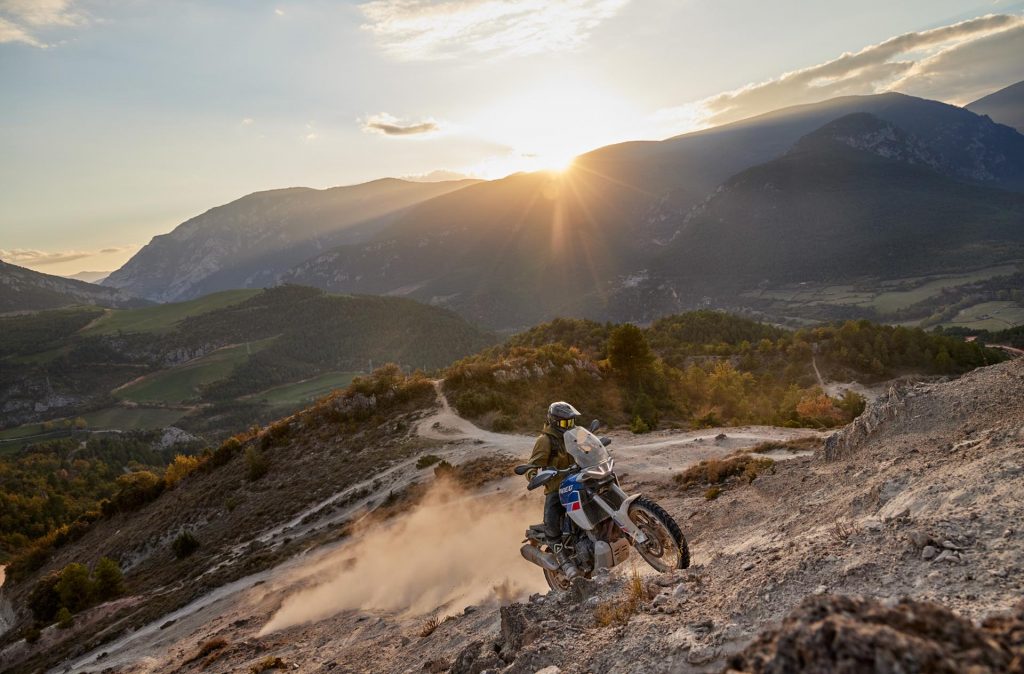
Expected to arrive in local showrooms in May/June. Pricing has yet to be confirmed.
The set-up Aprilia has chosen is ideal for overcoming any obstacle a demanding off-road ride might throw up, while also making an enjoyable ride on the road possible. The fuel tank is another one of the elements that clearly represents the clarity behind the Tuareg 660’s design.
Despite its large 18-litre capacity, it is extremely slender in the area where the rider’s legs come into contact with it and is fully protected by the frame, so there is no need for any additional covering. Its vertical development allows the fuel to stay close to the centre of gravity, without having any impact on the riding dynamics, the change in volume, or any change of its position within the tank – when tackling steep slopes for example. The fuel draught zone is located beneath the saddle. This has benefits both for centralisation of the masses and draught down to the last drop.
The choice of sizes for the tubeless aluminium wheel rims indicates the Tuareg 660’s clear off-roading vocation: the front rim is 2.5 x 21-inch; the rear rim is 4.5 x 18-inch. Both are shod with Pirelli Scorpion Rally STR tyres, respectively 90/90 and 150/70. The Brembo braking system relies on a pair of 300mm discs and double-piston callipers at the front and a single 260mm disc and floating, single-piston calliper at the rear.
Performance and safety with the APRC electronics suite
Aprilia has always been at the cutting edge of the electronics field (the first to introduce Ride-by-Wire throttle control on a MotoGP bike in 2002 and on a factory bike in 2007) and currently boasts the APRC (Aprilia Performance Ride Control) electronic controls package. Developed in top level competitions, it is considered by customers and critics to be among the most effective and advanced available.
Aprilia Tuareg 660 features the electronic multi-map Ride-by-Wire accelerator for finely tuned, delicate and progressive throttle control from low engine revs and a special APRC electronic controls package calibrated for performance and safety, with dedicated settings to provide a safe and thrilling ride on the road and, at the same time, an off-road ride without filters, ensuring the purest riding pleasure.

